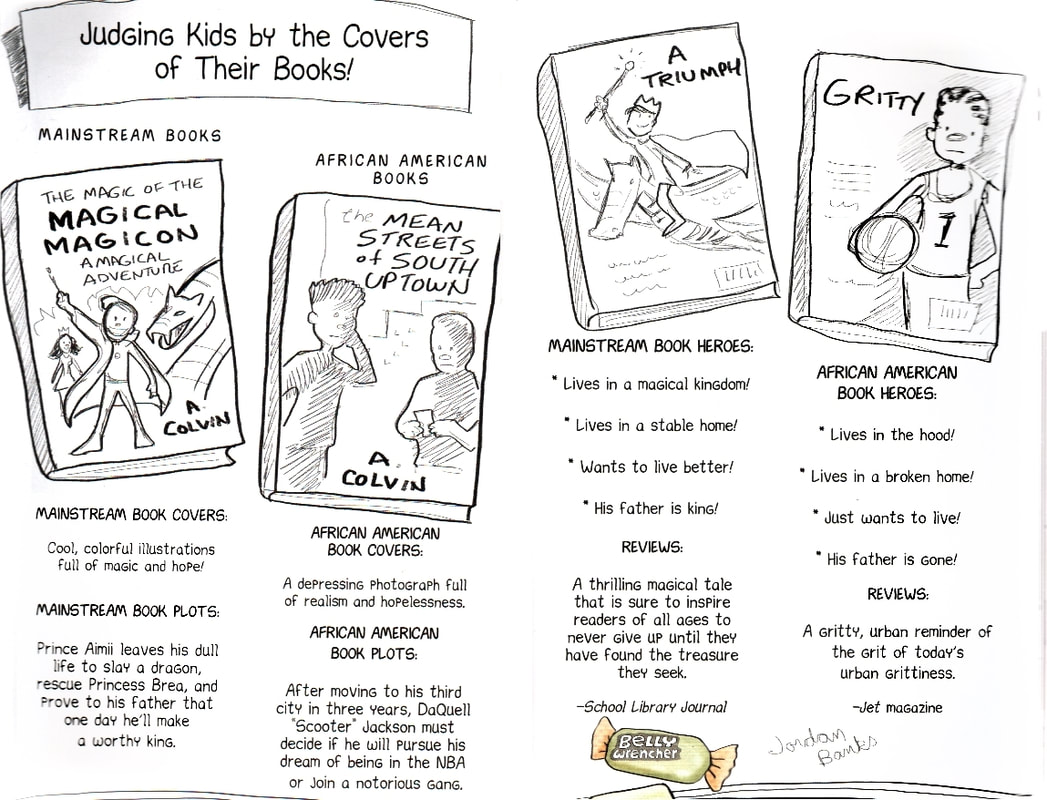|
New Kid. By Jerry Craft. Color by Jim Callahan. Harper. ISBN 978-0062691194 (softcover), $12.99; ISBN 978-0062691200 (hardcover), $21.99. 256 pages. A month ago, Jerry Craft’s graphic novel New Kid became the first comic to win the coveted Newbery Medal for children’s literature. I came to New Kid late, and KinderComics readers may remember that I did not include it among my faves of 2019. I wish I had. I confess I put off reading New Kid because I did not love its graphic style, which struck me as cobbled together digitally, with elements seemingly cloned, rescaled, and reused across its pages. At first the work looked patchy to me, compositionally choppy, and too tech-dependent for my tastes. I didn’t see the visual flow or elegance of design that I tend to crave. So, I was closed-mind about this one, I have to say. (This would not be the first time my aesthetic preferences blocked me from recognizing good work. For instance, I recently read Maggie Thrash’s fine comics memoir Honor Girl, done in a seemingly naive watercolor style, and realized that I had been avoiding that one also. I had sold it short.) New Kid deserves better from me. It’s an excellent school story, not only smartly written but visually clever and insinuating throughout. Craft, with exceeding sharpness, depicts African American scholarship boy Jordan Banks and his private school mates at awkward intersections of race, class, and gender. Indeed New Kid, with miraculously high spirits, examines the effects of racism and classism without ever actually breathing those words. Craft is astute and at times can be blunt, but is also endlessly subtle; his touch is marvelously light, yet telling. New Kid manages to be hopeful and often funny, even while acknowledging racism as both systemic feature and stubborn habit. The story of one school year, New Kid gently critiques the class aspirations of private school parents, the casual racist carelessness of teachers, and the blunders of overcompensatory liberal tone-deafness, all while painting Jordan and his fellow students as canny survivors. The book abounds with sly, knowing recognitions, unexplained but pointed, including many gags that show Jordan trying to deal quietly with racial and class-based awkwardness. A middle-class Black boy in a (to him) new school that defines the very notion of privilege, Jordan is alive to the implications of every social move. Craft’s approach is at once realistic, worldly, amused, jaded even, and yet guardedly optimistic; he is properly impatient with ingrained prejudice, yet fatalistically aware that, well, young people have to get on in this broken world. New Kid humorously acknowledges the ways young people of color are too often seen, or rather mis-recognized, and fences smartly with the usual stereotypes about young urban Blackness. The school kids mostly come out well here: they see and deal with social inequality and the willed blindness of adults while upholding their sense of humor and camaraderie. Running gags and droll in-jokes are everywhere: a kind of code and coping mechanism among the kids. For example, Jordan and his classmate Drew call each other mistaken names throughout, mimicking the cluelessness of their white teacher who cannot distinguish one Black student from another. The jokes in New Kid are not just funny, but insightful—as are the young people who tell them. One of the best things in New Kid is a self-reflexive spoof of children’s and young adult publishing that mocks the narrowness of Black depictions in the field. This spread made me laugh out loud (please forgive my crummy scan): If, as Philip Nel argues in Was the Cat in the Hat Black?, the cordoning off of genres marks a de facto line of segregation (Genre Is the New Jim Crow, in Nel’s phrasing), then Craft gets this exactly, and takes the whole publishing field to task. Indeed, the sight of a “gritty” novel for Black teen readers becomes a repeated joke in New Kid, one that stings with its insight but is also downright hilarious. Bravo! This is a supremely wise and charming book that jousts with, and defeats, a thousand cliches.
2 Comments
Joe S. Sanders
4/1/2020 12:07:15 am
Hi Charles--Like you, I'm late to this book. I just finished it last night and in fact read it twice to try to understand it as well as possible and remember it well, despite my fading memory. Yours is a fair and self-reflective reading of the book, and I really admire it. I had the same objections to the visual style as you did when I first encountered the book, but by the end, I found myself thinking that this is a book made by someone who clearly loves comics and gets what they can do well. I also thought the story itself wound up being woven deftly together, with themes echoing and amplifying beautifully. Too, just as you've already said, Craft deals with huge, difficult issues amazing nuance and humor (something that New Kid critiques other books for failing to do). I came right to your review after finally finishing the book, and I find as usual that you're nailing it. A great book, and I'm going to have to do some soul-searching about my initial reaction to the visual style. I suspect what I'll find is that I'm getting old and have a knee-jerk reaction to aesthetics that don't line up with the ones I grew up loving. I'm looking forward to the next time that I read this book.
Reply
Charles Hatfield
7/8/2020 12:16:35 pm
Joe, I'm so sorry, I missed this comment for (gulp) more than three months! I suck.
Reply
Your comment will be posted after it is approved.
Leave a Reply. |
Archives
June 2024
|




 RSS Feed
RSS Feed
